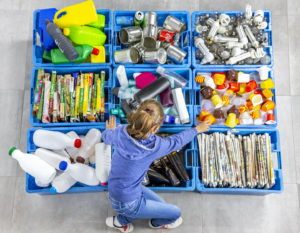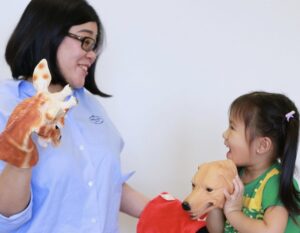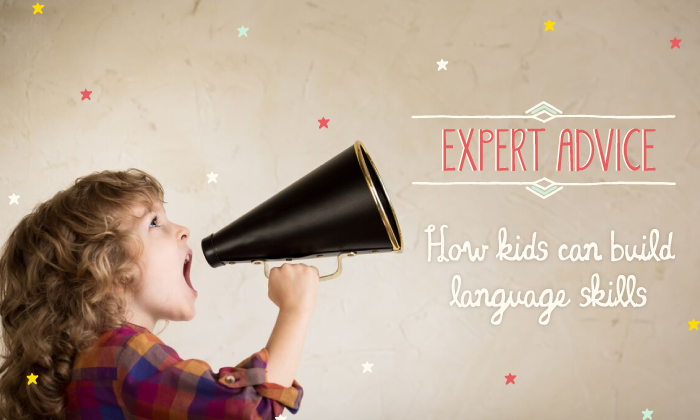

Want to have fun and build language skills this summer, mama? The experts from Leapfrogs weigh in with their top tips and strategies!
Language Skills! Communication! Vocabulary! Speaking Well! All skills that need very little explanation as to why they are so very important in a child’s life. Michelle, Geraldine, Katie, and Sharon from the Speech Language Therapy Team at Leapfrogs weigh in on their their favourite go-to activities that never fail to bring a sparkle to children’s eyes, a smile to their lips, and the love of language.
Parents often ask us what are the best games or toys for building language skills, so here’s a list of treasured and EASY activities and ways that we have found to boost language in ways that are just as fun for the kids as they are for us!
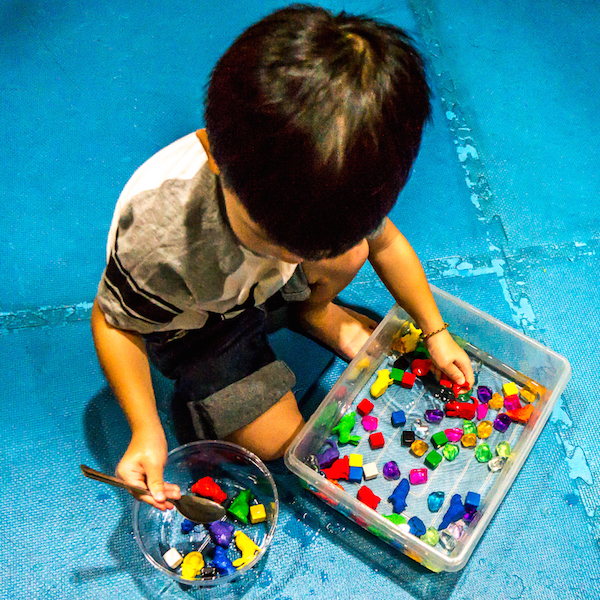

Water PLAY!
Need we really say anything else? Every child we have encountered is attracted to playing with water! There’s very little introduction required, few materials needed to make this spectacular. Our kids often attend with amazing attention and interest when we pull out an old plastic tub that used to contain Chinese New Year goodies, or recycle takeaway containers and fill them with water and sometimes add a few drops of food colouring!
We find that transparent containers are often the best, and anything that will fit into little hands — like small juice bottles, soup ladles, funnels, some food colouring, and colourful items like stones that sink or float – will work wonders. We suggest beginning with water and 1-2 items only, then adding playthings as kids’ interests wane. This not only builds attention, creativity, imagination, sensory and motor development, but is such a great way to positively enhance the child’s growing brain as shown by research!
Of course, we are thrilled when something so simple, accessible and fun builds the foundation and prepares the child for many complex concepts! We frequently label all the actions (“pour”, “mix”, “stir”) as we do them. Try having the child request for items; use complex words like ‘sink’, ‘overflow’, ‘half’, ‘empty’, and ‘spill’ readily, and joyfully let our inner tidy-up tendencies take a breather for a moment.
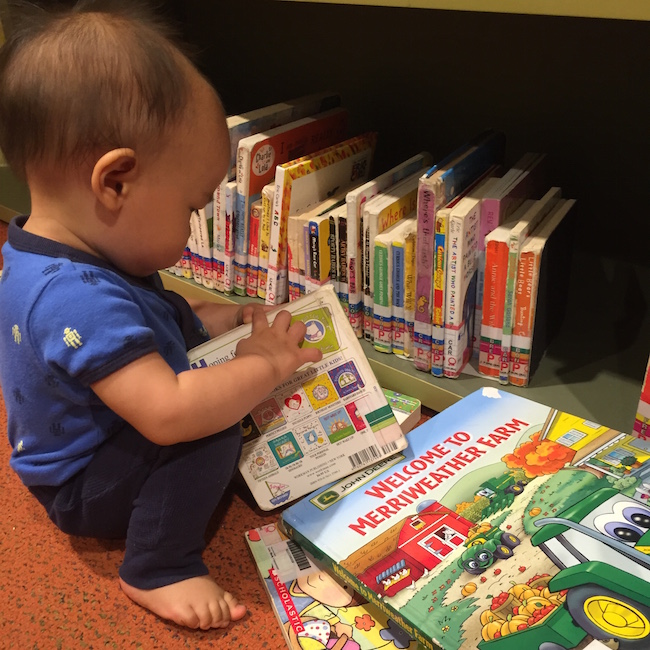

Books!
Our next must-do at the clinic: Books! There’s usually no need to wait for a child to be able to read to introduce a book, nor do we always focus very much on the stories and words. We remember being asked by a parent how we suggested ‘reading’ to their child when all they were interested in doing was flipping the pages, opening and closing the books, and pulling them off the shelf one by one during storytime.
First of all, we take all of the above “ways” that the child is responding to a book as positive, and will incorporate them into all the language that we use during ‘book time’. For instance, “Wow, let’s flip really fast! All finished!”
We usually select books that we believe are most likely to have a character that the child likes or finds familiar. We might even make a book with their pictures in it. And we will go with the flow that the child dictates, incorporating one or two turns where we can direct his attention e.g., “Look, a fire engine!” before he flips the book closed again.
Books that are often popular and have a “queue to borrow” in the clinic are those that have expressive characters with lots of emotional reactions, sometimes fewer words, twisted plots, and plenty of room that lets us have lots to talk about and predict, guess, get caught up into what would happen! We find that the more a child is able to relate to the characters, imagine and figure out what wasn’t said, the more we like the book and the more we can use the book to build vocabulary, and use words to retell the story and ask questions (A very key skill in our books! Literally!).
Since we are on the topic of asking questions, we would deliberately set up a role reversal to keep the child on their toes. So while the adult is often the one asking the question and the child is usually the one answering, during our sessions, we like to reverse the roles and encourage children to ask good questions. Really, really good questions!
Of course, great books are a wonderful way to stimulate questions. One way we incorporate questions into books is to almost ‘speak’ the questions that we think are on the minds of the child and say them out loud on his behalf. Asking questions also allow the child to understand another important form of communication. Some of our favourites include books by Mo Willems, especially books in the Piggie and Elephant series like My Friend is Sad and I Broke My Trunk!.
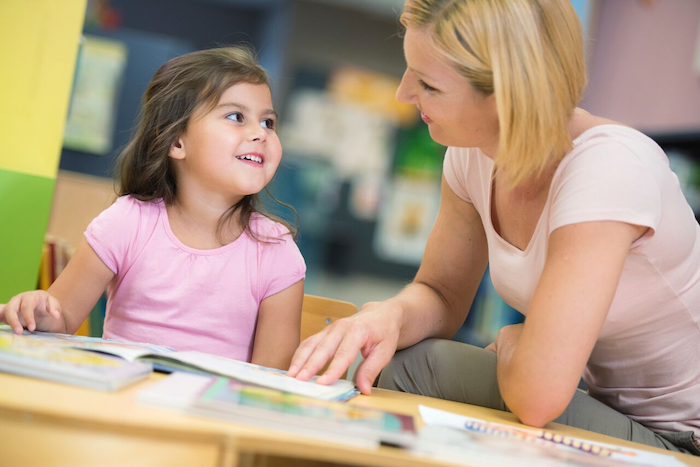

Questions
Another way we promote a “Questioning environment” is by asking questions ourselves: “I can’t find the Playdoh, is it on the shelf or in the drawer?”, or asking a question in response to a child’s question. For instance, when asked “What are we doing today?”, we delight in the opportunity to respond with “What do you think we might be doing today?”
When we model questioning, we are encouraging children to take an active role in their own learning. In other words, figuring out how their world works by seeking information. Questioning also helps children develop critical thinking skills and build strong relationships when they turn to the people they love and trust to help them learn and build essential skills like language and thinking.
And while we are building their language and thinking skills, we love to link these to even higher and more abstract mental abilities, such as the ability to visualise or imagine using pictures. As we read books to a child or talk about various topics, we will do things like asking a child how big an item they imagine is, to describe the details that they “see” in their “mind’s eye” — like when we talk about a birthday party we will often ask how big the cake is, and ask the child to show us with their hands. Research has shown the ability to create mental images makes it easier to process the information, recall it later, and put the information into one’s own words. As Albert Einstein said, “If I can’t picture it, I can’t understand it”.


Leapfrogs started out as a Speech Therapy practice specialising in developing communication skills for children as young as 13 months to 18 years of age. With over 10 years in the business of working with developing verbal expressive abilities in children with mild to severe challenges in these areas, after going through numerous toys, countless resource books, and endless ideas from the internet, the Speech Therapy team at Leapfrogs is happy to share their favourite learning activities and strategies. We wish you a summer of fun, mama!
-Michelle, Geraldine, Katie, & Sharon






 View All
View All





 View All
View All


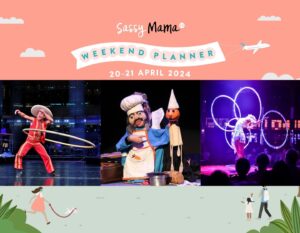

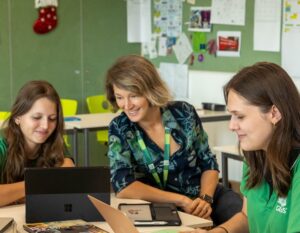


 View All
View All



